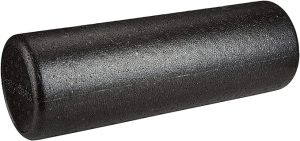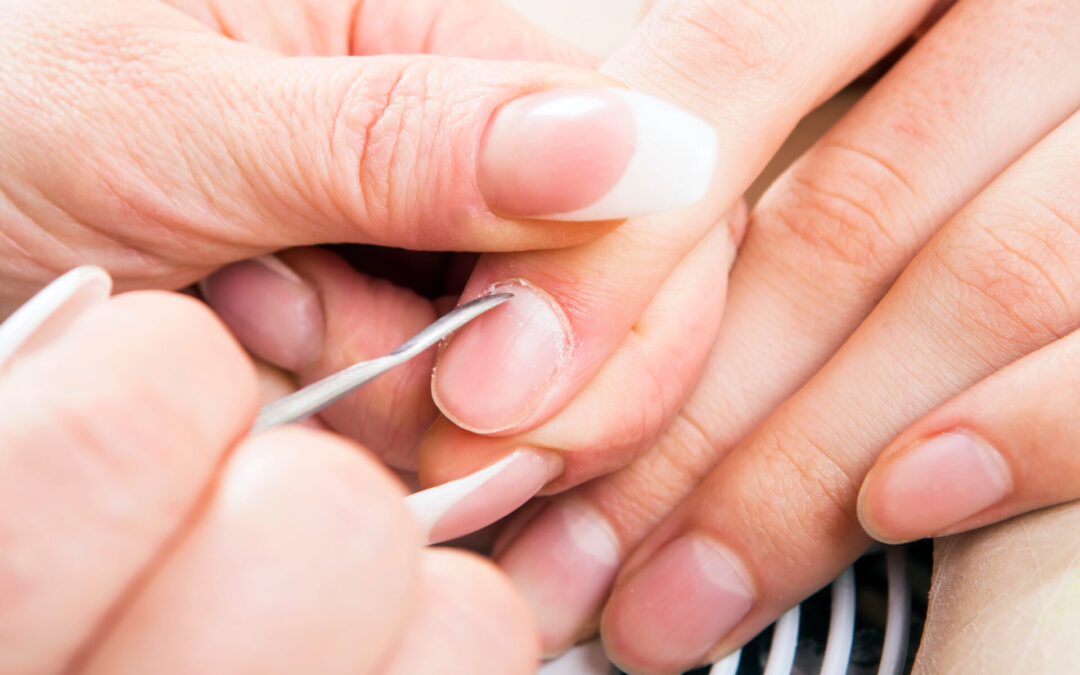Pec Minor Stretch Video
Watch this video to learn about the best ways to achieve a good pec minor stretch. Stretching is not only important when it comes to preventing injuries, but it also helps to activate the muscles and maximize workout effectiveness.
Welcome to a journey of enhanced mobility and increased well-being! In this article, we delve into the often-neglected realm of pec minor stretches — a crucial aspect of maintaining a flexible and healthy upper body. Whether you’re an avid fitness enthusiast, an athlete looking to optimize performance, or someone seeking relief from postural issues, understanding and incorporating these targeted stretches into your routine can make a transformative difference.
Join us as we explore the anatomy of the pec minor muscles, the importance of maintaining their flexibility, and a detailed walkthrough of effective stretch exercises. Discover how these stretches not only alleviate tension but also contribute to improved posture, reduced discomfort, injury prevention, and enhanced overall muscle function.
Embark on this enlightening journey with us, as we guide you through the ins and outs of pec minor stretch exercises, empowering you to take charge of your physical well-being. Let’s open the door to greater flexibility and a healthier, more resilient upper body.
The Anatomy of the Chest Muscles
The chest muscles, scientifically known as the pectoralis major and pectoralis minor, form a crucial part of the upper body’s musculature. The pectoralis major is a large, fan-shaped muscle that spans across the chest and consists of two distinct portions – the clavicular head and the sternal head. The clavicular head originates from the collarbone, while the sternal head originates from the sternum and the upper six costal cartilages. Both heads converge towards the upper arm, inserting on the humerus. This muscle is primarily responsible for various arm movements, such as flexion, adduction, and medial rotation. Beneath the pectoralis major lies the pectoralis minor, a smaller triangular muscle that attaches to the third, fourth, and fifth ribs. Though smaller in size, the pectoralis minor plays a crucial role in stabilizing the scapula, aiding in movements like protraction and depression. Together, these chest muscles not only contribute to the aesthetics of the torso but also play a pivotal role in facilitating a wide range of upper body movements. Understanding the intricacies of their anatomy is key to developing targeted exercise routines and fostering overall upper body strength and function.
The Role of the Pec Minor Muscle
The pectoralis minor, a relatively smaller yet significant muscle, plays a crucial role in the stability and functionality of the shoulder girdle. This triangular muscle is located beneath the larger pectoralis major and attaches to the third, fourth, and fifth ribs.
- Scapular Stabilization: The pectoralis minor plays a key role in stabilizing the scapula, or shoulder blade. It achieves this by drawing the scapula forward and downward, aiding in movements like protraction and depression.
- Assistance in Shoulder Movement: This muscle contributes to the coordination of shoulder movements, particularly during activities that involve raising the arm overhead. It actively participates in actions such as reaching or lifting objects, ensuring smooth and controlled motion of the shoulder joint.
- Prevention of Shoulder Dysfunction: By stabilizing the scapula and assisting in shoulder movements, the pectoralis minor helps prevent issues related to shoulder dysfunction or improper biomechanics. Its proper function is essential for overall upper body health and performance.
- Support for Upper Body Activities: The pectoralis minor provides additional support for various upper body activities, including those that require controlled and coordinated movements of the shoulder complex. Its engagement enhances the efficiency and effectiveness of these movements.
- Integration with Larger Muscles: While smaller in size compared to the pectoralis major, the pectoralis minor works in conjunction with other surrounding muscles to ensure a harmonious and balanced function of the chest and shoulder region. This integration is vital for optimal upper body strength and functionality.
Best Pieces of Workout Equipment to Strengthen and Stretch Your Pec Muscles
2. WHATAFIT Resistance Band Set
3. Amazon Basics High-Density Round Foam Roller
A List of of Pectoralis Minor Stretching Exercises
Stretching the pectoralis minor is important for maintaining shoulder flexibility and preventing issues related to tightness or imbalance. Here are several effective pec minor stretches you can incorporate into your routine:
- Doorway Stretch:
- Stand in a doorway with your arms bent at 90 degrees.
- Place your forearms against the door frame.
- Gently lean forward, allowing your chest to open and feel the stretch across the front of your shoulders.
- Wall Chest Stretch:
- Stand with your right side facing a wall.
- Place your right hand on the wall at shoulder height.
- Slowly rotate your body away from the wall, feeling a stretch across the chest and the front of the shoulder.
- Repeat on the other side.
- Corner Stretch:
- Face a corner with your arms raised, forming a “W” shape with your elbows.
- Place your forearms on each wall, and step forward slightly.
- Lean into the corner to feel a deep stretch across your chest.
- Pec Minor Self-Massage with a Ball:
- Lie on your back and place a massage ball or tennis ball under your pec minor, near the upper edge of your armpit.
- Apply gentle pressure and roll the ball around to release tension.
- Child’s Pose with Arm Extension:
- Start in a kneeling position, then sit back on your heels.
- Extend your arms in front of you with your palms on the floor.
- Walk your hands to one side, feeling a stretch across the side of your chest. Repeat on the other side.
- Thread the Needle Stretch:
- Begin on your hands and knees in a tabletop position.
- Reach your right arm under your left arm, lowering your shoulder and cheek to the ground.
- Feel a stretch in the right shoulder and upper back. Repeat on the other side.
Remember to perform these stretches gently and hold each stretch for about 15-30 seconds, breathing deeply and consistently. Regularly incorporating these stretches into your routine can help maintain flexibility in the pec minor and promote overall shoulder health. If you have any existing shoulder issues or concerns, it’s advisable to consult with a healthcare or fitness professional before engaging in a new stretching routine.
The Benefits of Stretching Your Pec Muscles Before and After a Workout
Stretching your pectoralis muscles, both before and after a workout, can offer several benefits that contribute to overall flexibility, muscle function, and injury prevention. Here are the key advantages:
Before Workout:
- Improved Range of Motion: Stretching the pectoralis muscles before a workout helps increase the flexibility of the chest and shoulders, allowing for a greater range of motion during exercises.
- Enhanced Muscle Elasticity: Dynamic stretches or mobility exercises for the pectorals can improve muscle elasticity, preparing them for the upcoming movements and reducing the risk of strains or tears.
- Activation of Neuromuscular Pathways: Gentle stretching before a workout activates neuromuscular pathways, promoting better communication between the nervous system and muscles. This can enhance muscle engagement and coordination during exercises.
- Increased Blood Flow: Stretching increases blood flow to the muscles, delivering oxygen and nutrients. This can help prime the pectoralis muscles for the demands of the workout and improve overall exercise performance.
- Injury Prevention: Pre-workout stretching can help prevent injuries by preparing the muscles and joints for the stresses of physical activity, reducing the likelihood of strains or imbalances.
After Workout:
- Muscle Recovery: Stretching post-workout aids in muscle recovery by promoting blood circulation, which helps remove waste products (like lactic acid) and delivers essential nutrients to the muscles.
- Reduced Muscle Soreness: Stretching helps alleviate muscle tightness and can contribute to reducing delayed onset muscle soreness (DOMS) experienced after intense workouts.
- Improved Flexibility Over Time: Consistent stretching after workouts contributes to long-term improvements in muscle flexibility. This increased flexibility can enhance overall joint health and reduce the risk of injury in future workouts.
- Relaxation and Stress Reduction: Post-workout stretching, especially static stretches, can induce a sense of relaxation and help reduce stress. This is beneficial for both physical and mental well-being.
- Correction of Muscle Imbalances: Regular stretching can address muscle imbalances that may develop during a workout. This is particularly important for individuals who engage in repetitive movements that can lead to tightness in specific muscle groups.
Remember to tailor your stretching routine to your individual needs and the specific demands of your workout. Incorporating a combination of dynamic stretches before exercise and static stretches after can provide a well-rounded approach to optimizing your pectoralis muscles’ health and performance.
Different Types of Pec Minor Injuries
While the pectoralis minor is a relatively small muscle, injuries to it can occur, particularly in individuals involved in activities that strain or overuse the chest and shoulder area. Common types of pec minor injuries include:
- Strains: Pec minor strains can result from overstretching or overloading the muscle beyond its capacity. This can happen during activities such as heavy lifting, sudden or forceful arm movements, or improper exercise techniques.
- Tendonitis: Inflammation of the tendons attaching the pectoralis minor to the ribs or shoulder blade can occur due to repetitive stress or overuse. This condition, known as tendonitis, can lead to pain, swelling, and reduced range of motion.
- Trigger Points: Pec minor muscles can develop trigger points, which are tight knots or bands of muscle fibers. These can cause localized pain and discomfort and may refer pain to other areas of the chest, shoulder, or arm.
- Adhesions or Scar Tissue: Overuse or repetitive trauma can lead to the formation of adhesions or scar tissue in the pectoralis minor. This can restrict the muscle’s normal movement, causing pain and stiffness.
- Inflammation: Inflammation in the pectoralis minor may result from overexertion or chronic irritation. Inflammatory conditions, such as bursitis, can affect the small bursa sacs near the muscle, leading to pain and swelling.
- Nerve Compression: Pec minor injuries can sometimes lead to nerve compression, particularly the compression of the brachial plexus or other nearby nerves. This can cause symptoms such as tingling, numbness, or weakness in the arm or hand.
- Postural Issues: Pec minor imbalances or tightness can contribute to postural issues, such as rounded shoulders or forward head posture. Over time, poor posture may lead to chronic pain and discomfort in the chest and shoulder region.
It’s essential to note that the severity of these injuries can vary, and proper diagnosis by a healthcare professional is crucial for an accurate assessment and appropriate treatment. Rest, ice, compression, and elevation (R.I.C.E.), along with targeted stretching and strengthening exercises, may be recommended to facilitate recovery. In more severe cases, medical interventions such as physical therapy or, in rare instances, surgical procedures may be considered. Individuals experiencing persistent or severe symptoms should seek professional medical advice for a comprehensive evaluation and personalized treatment plan.
Zoppler is reader supported and may earn affiliate commissions from links on this page. We support and believe in all the products and services we promote and are affiliated with.














